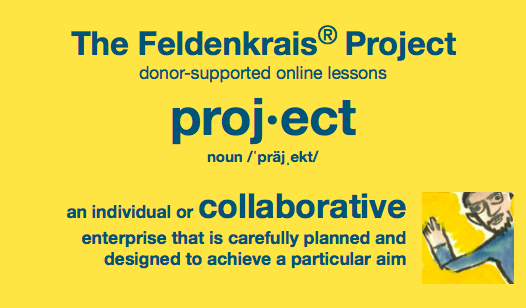This Zoom event replay includes
- The FP at 5! – a Feldenkrais Project update for donors
- Lesson: Reversible Diagonal Lengthening and Lifting, with “Piano Playing” Fingers and Toes (back-lying and front-lying)
- Talk: Nick summarizes Lesson #2, “What Action is Good?”, from Moshe Feldenkrais’s book called Awareness Through Movement.
Everyone can access this event’s FREE talk summarizing “What Action Is Good?” by Moshe Feldenkrais. Just scroll down to the blue button!
The rest of this event is bonus video content for our donors. You can learn about it in the notes and comments below, but to access the lesson, update, and discussion replays you’ll need to join The FP as Member or Patron. Learn more
If you are a Member or Patron, please log in:
Feldenkrais Project Update: The FP at 5! (30 minutes)
What we’ve accomplished, how we budget and fund the Project, how to make the most of current and upcoming donor benefits, and where we’re headed next.
Lesson: Reversible Diagonal Lengthening and Lifting, with “Piano Playing” Fingers and Toes (49 minutes)
Back-lying and front-lying, learning to lightly and easily lift overhead arms and long legs from the floor by finding accurate support from the ground, clear skeletal lines of skeletal support, and proportional muscle tone (using the large muscles to do the large work, and reducing the unnecessary efforts of small muscles). Ends with experiments with “reversibility,” by which Moshe Feldenkrais means three dimensional course changes at will.
Comfort & Configuration:
As always, but especially in this lesson, please limit the size of the movements to only what feels comfortable. You don’t actually need to lift your limbs! The after-lesson discussion below includes some inspiring commentary from a student who, for comfort, chose not to lift any parts of herself at first, then discovered how profound newfound abilities arose due to her taking care of herself patiently, and letting the lesson unfold.
Other lesson notes are below
Lesson discussion, and other topics (27 minutes)
We discuss sharing The FP; why this lesson works when other attempts at this function haven’t; the benefit of not knowing where a lesson is going; “I can’t do this” feelings; communication and teaching styles; Feldenkrais and learning to love yourself; Feldenkrais for victims of trauma, and for feeling safe in one’s body; Feldenkrais compared to meditation; why it’s easier to work with the body patterns than the mind; technical vs esoteric language in Feldenkrais teaching; the neuroscience of learning; the safety of as-literal-as-possible descriptions of subjective experience; the marketing challenge of promoting self-reliance.
FREE Talk: “What Action Is Good?” (20 minutes)
Based on Lesson #2 from Moshe Feldenkrais’s book called Awareness Through Movement.
This video version on YouTube includes context commentary if you’ve just done the lesson above
Or listen to this permanent free audio version, lightly edited for our ATM book collection:
Discussion and wrap-up (5 minutes)
We discuss the density of Moshe Feldenkrais’s writings, Anat Baniel’s lovely work with children, and other pediatric Feldenkrais work.
Other lesson notes
Curiosities:
I designed this lesson to complement my “What Action Is Good?” talk, linked above. It includes detailed descriptions of the biomechanics and learning at work in the lesson. The talk is valuable before or after the lesson.
Context:
Now part of our Bonus Video Content for Members & Patrons, this special event took the place of our Q1 2024 Patrons Quarterly Conference as we shared the FP’s 5th anniversary update with all donors.
The “What Action Is Good?” talk has been edited into permanent audio format as Lesson #2 in our ATM book collection.
This event’s lesson was designed to expand on Lesson #3 in the ATM book collection, Some Fundamental Properties of Movement.
Related Lessons:
For Members and Patrons. Login above.
Source:
For Members and Patrons. Login above.
Please don’t share the replay links except for the talk. The others are intended for current Feldenkrais Project Members and Patrons.




Both the lesson and the talk were super-helpful in developing greater awareness. I did the lesson last week and listened to the talk yesterday. Today while wiping down the shower I thought for the first time about how I was using my back muscles not just my arms. Thank you!